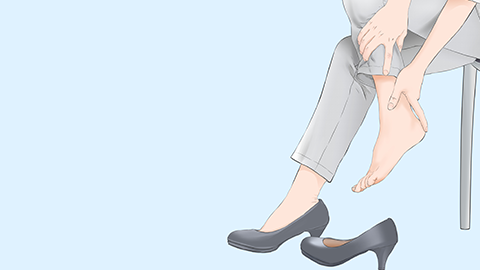足跟脂肪垫炎和足底筋膜炎的区别有哪些
Generally speaking, the differences between heel fat pad inflammation and plantar fasciitis mainly include different pain locations, distinct pain characteristics, varying triggering factors, different high-risk populations, and differing examination findings. Specific analysis is as follows:

1. Different pain locations: In heel fat pad inflammation, pain is concentrated directly under the heel, with obvious tenderness when pressing on the bottom of the heel. In plantar fasciitis, pain usually occurs on the inner side of the heel or at the part of the sole near the heel, sometimes radiating toward the front of the foot. Pressing on the attachment point of the plantar fascia causes more noticeable pain.
2. Different pain characteristics: Patients with heel fat pad inflammation typically experience significant pain when standing or walking upon waking, which may slightly improve after walking for a period of time. In contrast, patients with plantar fasciitis often suffer severe pain with the first step in the morning, which eases after several minutes of activity but worsens again after prolonged walking or standing.
3. Different triggering factors: Heel fat pad inflammation is commonly caused by long-term pressure on the heel, degeneration of the fat pad, or trauma—such as wearing hard-soled shoes for extended periods or frequently walking while carrying heavy loads. Plantar fasciitis is usually due to repeated strain and micro-injury of the plantar fascia, such as from excessive long-term exercise, or abnormal foot loading in individuals with flat feet or high arches.
4. Different high-risk populations: Heel fat pad inflammation is more common in middle-aged and elderly individuals, especially those who are overweight or have jobs requiring prolonged standing or walking. Plantar fasciitis is more prevalent among athletes, long-distance runners, and people with flat feet or high arches, and tends to affect relatively younger individuals.
5. Different examination findings: During ultrasound examination, heel fat pad inflammation shows thickening of the heel fat pad and uneven echogenicity. Plantar fasciitis appears as thickening of the plantar fascia, locally decreased echogenicity, and in some patients, inflammatory changes at the fascia's attachment site can be observed.
In daily life, patients should wear soft, supportive footwear and avoid prolonged standing or walking. Appropriate foot stretching exercises can also help. If pain is significant, topical anti-inflammatory and analgesic medications or physical therapy may be used under medical guidance to relieve symptoms.




